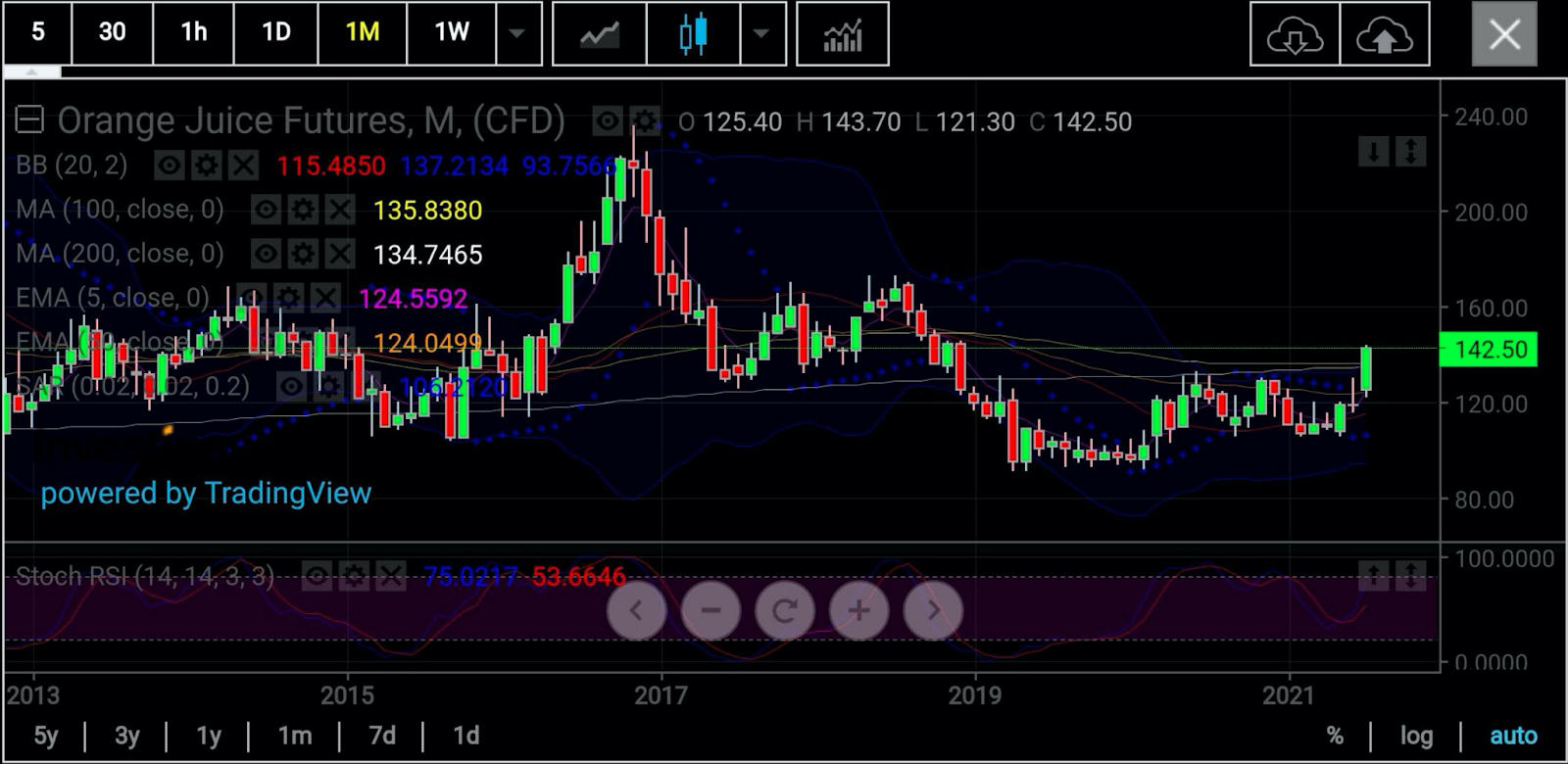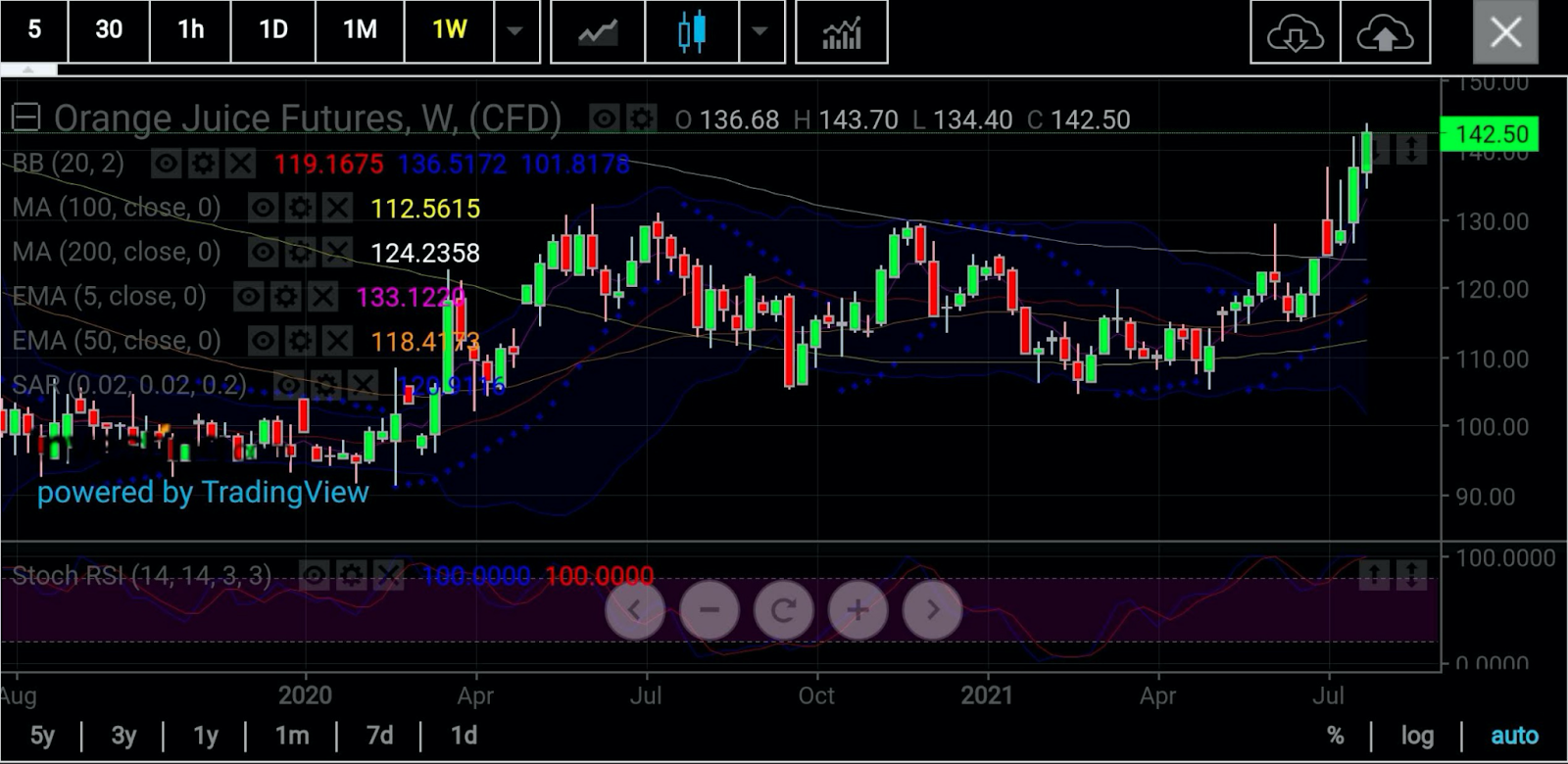Back in February, as futures of frozen concentrated orange juice sat at the bottom of commodity returns for the month, I asked if prices of OJ can turn bubbly again.
It has taken five months, but if OJ maintains its current momentum, it could finish July up 20% or more, for its best month in more than five years.
The last time orange juice futures were up this much in a month was in March 2016, when they gained 21.25%.

All charts courtesy of SK Dixit Charting
Various factors are working in OJ’s favor this time, including potential storms from the Atlantic hurricane calendar that could hit Florida, the orange juice state of the United States, and dry weather in northern Mexico’s growing areas.
But some analysts, including Price Futures Group’s Chicago-based crop analyst Jack Scoville, think the current OJ rally is largely in response to the deep freeze that has set into the orange groves in Brazil, the world’s largest grower of the fruit as well as producer of citrus juices.
In an outlook shared with Investing.com on Tuesday, Scoville said:
“New forecasts for freezing temperatures in Brazil’s Sao Paulo could affect the production of oranges in the state.”
Brazil accounts for about 30% of the world's orange output and almost 95% of that production is concentrated in Sao Paulo.
While the chill in Brazil had already been priced into the market by some, additional “freezing temperatures have been reported in the state in the last couple of weeks,” said Scoville, adding: “Brazil is cold and dry.”
At Tuesday’s settlement, OJ’s most-active September contract on ICE Futures US settled at 1.4265 a lb, up 4.2% on the day.

OJ’s Next Target Is Above $1.70, or Another 20% Up
Chart-wise at least, OJ could gain another 20% to above $1.70 per lb, said Sunil Kumar Dixit of SK Dixit Charting in Kolkata, India.
He explains:
“The monthly chart of OJ is the long term picture here, with a loud and clear breakout above the static horizontal resistance of $1.30-$1.32 after a long consolidation and accumulation phase.”
“Also, the stochastic Relative Strength Index reading of 75/53 for OJ gives enough room for a further advance to the next top of $1.72 seen in 2018.”

But the extended OJ rally may not be a smooth one, with attendant volatility likely on the market’s way to another 30-cent, or 20%, gain, Dixit said.
“OJ’s weekly chart is the weaker link here as the Stochastic RSI reading of 100/100 limits immediate upside and calls for at least some price correction that could push the market to $1.30 levels before any significant rally,” he added.
Disclaimer: Barani Krishnan uses a range of views outside his own to bring diversity to his analysis of any market. For neutrality, he sometimes presents contrarian views and market variables. He does not hold a position in the commodities and securities he writes about.
